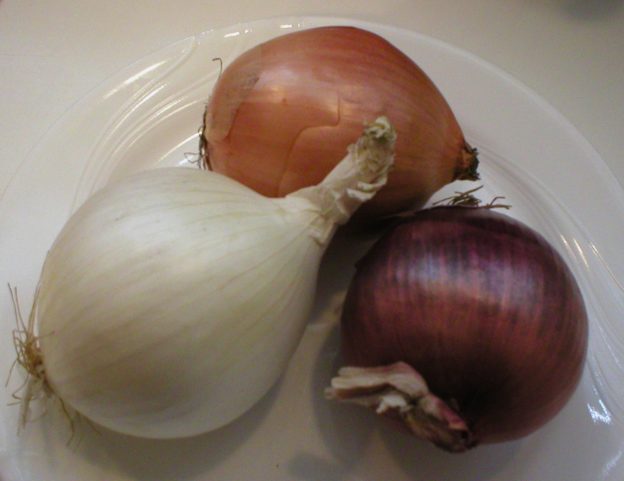Why Our Eyes Tear When Cutting Onions
And How to Prevent or Minimize It
Why Do Onions Make Our Eyes Tear?
When onions are growing, they use sulfur from the soil to create a compound that can easily turn into a gas. This helps deter insects and animals from feeding on them. When we cut into an onion, the cell walls are damaged. This releases the sulfur compound and enzymes that react, releasing a gas (syn-propanethial-S-oxide) into the air. When the gas comes in contact with the water in our eyes, it is converted into sulfuric acid. The sulfuric acid is what causes the eyes to sting, burn, and release tears. White, yellow and red onions have higher concentrations of the enzymes needed to create this gas. Sweet onions and green onions (scallions) have lower concentrations.
Our eyes have nerves that detect anything that’s potentially harmful. When our eyes react to the sulfuric acid, they release tears to try to flush it out. Some people are more sensitive to the gas and sulfuric acid than others. So, some people will tear more when cutting onions than others. But it’s helpful to know that onions pose no serious threat to the health of our eyes.
How to Reduce Tearing When Cutting an Onion
(1) First, place the onion in the freezer for 30 minutes or in the refrigerator for at least 2 hours before cutting it. Why chill an onion? The optimal temperature for the onion enzymes to do their job of protecting the bulb from predatory damage is 104°F. Our normal body temperature isn’t far from that. So, chilling the onion prior to cutting, takes it far below its optimal temperature, reducing its ability to cause tearing when cut.
(2) Refrain from cutting the root end until last, if at all. The root end of the bulb contains the highest concentration of the compound that cause tearing. So, when we cut the onion top first, peel it, then cut from the stem end downward, we’re minimizing the release of the enzyme that causes the tearing.
(3) Sweet onions have less of the sulfur compound in them, which means that cutting them will be less likely to make your eyes tear. If a sweet onion will work in your recipe, considering switching to the sweeter variety as an alternative.
(4) Another alternative would be to buy frozen, pre-chopped onions. This would save the time and possible agony of cutting fresh onions for cooking. If fresh onion is needed, consider using green onions (scallions), Spring onions, or sweet onions, rather than yellow, red, or white onions.
(5) When all else fails, invest in a pair of goggles to protect your eyes. Onion goggles, swimming goggles, or laboratory/safety goggles are all options to consider. Remember to consider the size of your head and if you routinely wear glasses when buying any goggles.
Resources
https://food.unl.edu/article/cooking-onions-without-crying
https://www.onions-usa.org/all-about-onions/trivia/
https://food52.com/blog/25677-how-to-cut-onions-without-crying
https://www.webmd.com/eye-health/news/20170705/why-chopping-onions-makes-you-cry
About Judi
Julia W. Klee (Judi) began her journey enjoying “all things food” in elementary school when she started preparing meals for her family. That love of food blossomed into a quest to learn more and more about health and wellness as related to nutrition. She went on to earn a BS Degree in Food and Nutrition, then an MS Degree in Nutrition. She has taught nutrition and related courses at the college level to pre-nursing and exercise science students. Her hunger to learn didn’t stop upon graduation from college. She continues to research on a regular basis about nutrition as it relates to health. Her hope is to help as many people as possible to enjoy foods that promote health and wellness.

